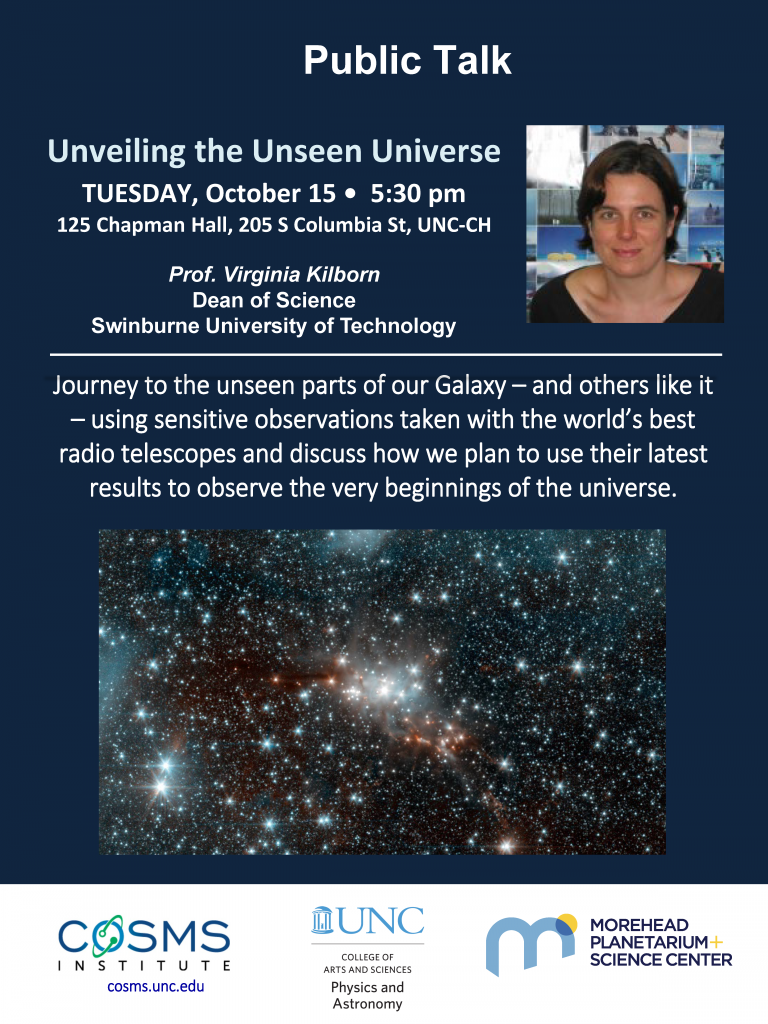On October 15th at 5:30 in Chapman Hall at UNC,
Prof. Virginia Kilborn, Dean of Science at Swinburne University of Technology, will take us on a journey of the unseen parts of our galaxy and others like it.
Abstract:
Atomic hydrogen gas is one of the main components in a galaxy like our own Milky Way – but we can’t see it when we gaze into the night sky. I will take you on a journey of the unseen parts of our Galaxy – and others like it – using sensitive observations taken with the world’s best radio telescopes. I will explain how astronomers use observations of atomic hydrogen gas to determine the history, and predict the future, of galaxies in the universe. A whole new generation of radio telescopes is under construction, and I will show the latest results from these telescopes, and discuss how we plan to use them to observe the very beginnings of the Universe.
Bio:
Professor Virginia Kilborn is Dean of Science at Swinburne University of Technology. Her primary research interests include tracing galaxy evolution by studying the neutral hydrogen gas in galaxies, and she is now working towards preparations for surveys with the next generation radio telescopes, such as the Australian SKA Pathfinder (ASKAP) and the SKA. Virginia undertook her PhD studies at the University of Melbourne, and following a post-doc at Jodrell Bank observatory in the UK, returned to Melbourne and has been at Swinburne since 2003. Virginia is active in the Australian Astronomical community and has been President of the Astronomical Society of Australia (2015-2017) and is currently Deputy Chair of the National Committee for Astronomy for the Academy of Science. Virginia is a leader in gender equity initiatives at Swinburne and beyond, co-leading the Swinburne-wide Women’s Academic Network, and she is a steering committee member and co-founder of the Women ATTaining Leadership (WATTLE) program, a multi-university leadership program for women. Virginia is a leader of the SHINE project where high school and university students send experiments to the International Space station, and she is strategic lead of the Swinburne Space Office.

